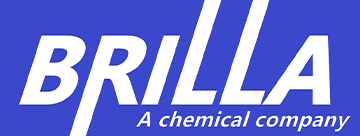Industry News
-
Physicochemical Properties of Alkyl Polyglycosides-Phase behavior 2 of 2
Physicochemical Properties of Alkyl Polyglycosides-Phase behavior Binary systems The phase diagram of the C12-14 alkyl polyglycoside (C12-14 APG)/ water system differs from that of the short-chain APG. (Figure 3). At lower temperatures, a solid/liquid region below the Krafft point is formed, it o...Read more -
Physicochemical Properties of Alkyl Polyglycosides-Phase behavior 1 of 2
Physicochemical Properties of Alkyl Polyglycosides-Phase behavior Binary systems The excellent performance of surfactants is essentially due to specific physical and chemical effects. This applies on the one hand to the interface properties and on the other hand to b...Read more -
Production of water-insoluble alkyl polyglycosides
If fatty alcohols containing 16 or more carbon atoms per molecule are used in the synthesis of alkyl polyglycosides, the resulting product is soluble in water only at very low concentrations, typically DP of 1.2 to 2. They are hereinafter referred to as water-insoluble alkyl polyglycosides.Amon...Read more -
Requirements for the industrial production of water-soluble alkyl polyglycosides
The design requirements of an alkyl glycoside production plant based on Fisher synthesis depend largely on the type of carbohydrate used and the chain length of the alcohol used.The production of water-soluble alkyl glycosides based on octanol/decanol and dodecanol/tetradecanol was first introd...Read more -
Synthesis processes for the production of alkyl polyglycosides
Basically, the reaction process of all carbohydrates synthesized by Fischer with alkyl glycosides can be reduces to two process variants, namely, direct synthesis and transacetalization. In both cases, the reaction may proceed in batches or continuously. Under direct synthesis, the carbohyd...Read more -
Technology and Production of Alkyl Polyglycosides-Degree of polymerization
Through the polyfunctionality of carbohydrates, acid catalyzed Fischer reactions are conditioned to produce an oligomer mixture in which on average more than one glycation unit is attached to an alcohol microsphere. The average number of glycose units linked to an alcohol group is described as th...Read more -
Technology and Production of Alkyl Polyglycosides-Raw materials for production
There are several methods for preparing alkyl polyglycosides or alkyl polyglucosides mixtures. Various synthetic methods range from stereotactic synthetic routes using protective groups (making compounds highly selective) to non-selective synthetic routes (mixing isomers with oligomers)。 Any man...Read more -
History of Alkyl Polyglycosides – Chemistry
In addition to technology, the synthesis of glycosides has always been of interest to science, as it is a very common reaction in nature. Recent papers by Schmidt and Toshima and Tatsuta, as well as many references cited therein, have commented on a wide range of synthetic potentials. In th...Read more -
History of Alkyl Polyglycosides – Developments in industry
Alkyl glucoside or Alkyl Polyglycoside is a well-known industrial product and has been a typical product of academic focus on for a long time. More than 100years ago, Fischer Synthesized and identified the first alkyl glycosides in a laboratory, about 40years later, the first patent application d...Read more -
Development status of sulfonated and sulphated products? (3 of 3)
2.3 Olefin sulfonate Sodium olefin sulfonate is a type of sulfonate surfactant prepared by sulfonating olefins as raw materials with sulfur trioxide. According to the position of the double bond, it can be divided into a-alkenyl sulfonate (AOS) and Sodium internal olefin sulfonate (IOS). 2.3.1 a-...Read more -
Development status of sulfonated and sulphated products? (2 of 3)
2.2 Fatty alcohol and its alkoxylate sulfate Fatty alcohol and its alkoxylate sulfate are a class of sulfate ester surfactants prepared by the sulfation reaction of alcohol hydroxyl group with sulfur trioxide. Typical products are fatty alcohol sulfate and fatty alcohol polyoxygen Vinyl ether sul...Read more -
Development status of sulfonated and sulphated products? (1 of 3)
The functional groups that can be sulfonated or sulfated by SO3 are mainly divided into 4 categories; benzene ring, alcohol hydroxyl group, double bond, A-carbon of Ester group, the corresponding raw materials are alkylbenzene, fatty alcohol (ether), olefin, fatty acid methyl ester(FAME), typical...Read more





